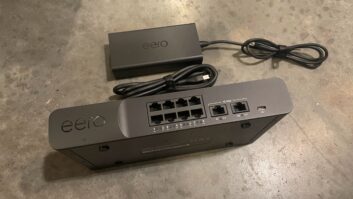Divide and conquer is the theme of this final course. The previous five courses have given us the theoretical information and knowledge needed to tackle network design, and now it is time to put all that bad-ass knowledge to work! This class helps you to estimate the right networking equipment for the project and then develop a workflow for planning and designing the network.
The course stresses the overall goal of the PCNA program is enabling technicians to select the right equipment for a project, regardless of the vendor. And other than course five, which dealt with BakPak, Pakedge’s own remote managing solution, the PCNA course focused on knowledge that applies to any brand of networking hardware.
There are three phases to successful network design: information gathering, design, and implementation.
To design a network you need to gather certain key pieces of info, and the best way to get this information is not by looking at a blueprint or even by a site visit; you need to discuss the network needs and expectations with the client. You need to figure out enough about the client’s lifestyle to understand their network needs. Do they throw massive raging parties that will occasionally require hundreds of wireless clients? Do they hardcore stream UltraHD content around the home? Or is it just a mom and pop that like to watch an occasional cat video and do the sporadic Facetime with the grandkids?

You also need to determine if the network needs should be optimized for cost, throughput, aesthetics, or environment, etc.

Network design works best by starting at the farthest points out — the WAPs — then working back to switches, router, and finally power requirements. Also, commercial environments have special needs such as requiring plenum-rated equipment or using wireless protection beyond WPA2/PSK. (Something called WPA2-Enterprise, which is an employee identification system giving each user their own individual login, which can be terminated if an employee leaves.)

The most difficult/important aspect of the design process is determining switch needs and locations because this accommodates for all wired devices on network, including WAP connections.

The layout selected for organizing switches is known as the network topology. There are two types of topologies: Star Topology, where all devices connect to a central switch and Hub-and-Spoke where some devices connect to a central switch and others connect to secondary switches. On larger projects, with many connected devices spread around the home, this will be the most frequently used method.

The class features several hands-on training modules where you download documentation and design a fairly typical residential network, selecting the right hardware for each area of the home. There are exercises accounting for switch needs, such as uplink type, number of ports, PoE needs, etc. and specifying the right router based on WAN-to-LAN throughput, WAN failover requirements, VLAN needs, and remote monitoring/access. It also discusses the “Principle of Centralization,” where devices that provide popular services (such as the modem or NAS drives) are connected as centrally on the LAN as possible, eliminating switch hops and network bottlenecks.

The final part of the class discusses some basics of power management. Power management devices serve five functions to the network. These are providing power for multiple devices, controlling power to devices, handling power surges, offering power/noise filtration, and supplying continuity (UPS). If you’ve used a smart power outlet on a job before — like the Pakedge P2 included with the PCNA course — then you know how invaluable these devices can be for self-healing network issues!
As we learned at the very beginning of course one — remember, way back in September when we started this? — the PCNA course exists to help you (and your technicians) build networks that don’t suck. Without a doubt, my networking knowledge is 100-percent greater now than when I started, and PCNA provided numerous tips that will help in all of my designs going forward.
Check out the previous articles in this series below:
PCNA Course 1 – Essentials: Build Your First Network
Pakedge Certif. Network Admin. Course 2 – It’s All About Switches
Routers, Not Rooters: An Inside Look at Pakedge’s Networking Course 3







